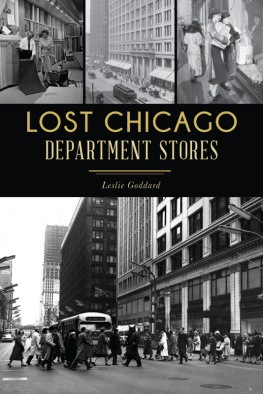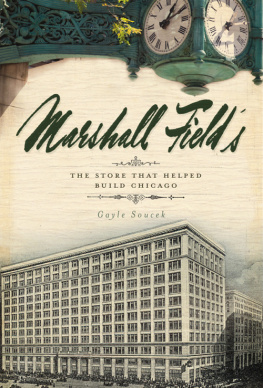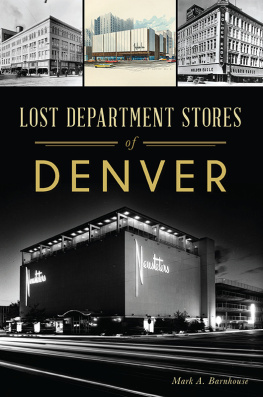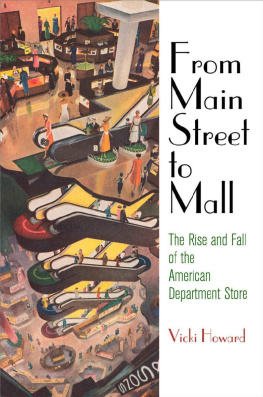

Published by The History Press
Charleston, SC
www.historypress.com
Copyright 2022 by Leslie Goddard
All rights reserved
Front cover, top left: AP photo; top center: LC-D4-34699/Library of Congress/Prints and Photographs Division; top right: DN-A-4841/Chicago Sun-Times/Chicago Daily News Collection/Chicago History Museum; bottom: UPI Newspictures.
Unless otherwise noted, all images are courtesy of the author.
E-Book year 2022
First published 2022
ISBN 978.1.4396.7450.5
Library of Congress Control Number: 2021950615
Print Edition ISBN 978.1.4671.4771.2
Notice: The information in this book is true and complete to the best of our knowledge. It is offered without guarantee on the part of the author or The History Press. The author and The History Press disclaim all liability in connection with the use of this book.
All rights reserved. No part of this book may be reproduced or transmitted in any form whatsoever without prior written permission from the publisher except in the case of brief quotations embodied in critical articles and reviews.
CONTENTS
ACKNOWLEDGEMENTS
Every time I give a lecture on the history of Chicagos department stores, I am struck by how enthusiastic audiences become. People clamor to tell me stories of going to State Street with their grandmother or aunt or mother, wearing white gloves and hats. They reminisce about eating in the Walnut Room at Marshall Fields, visiting the S&H Green Stamps redemption center at Wieboldts and riding the kiddie monorail at Sears. More than anything, they remember the Christmas window displays and how it felt to walk from one department store to the next, braced against the December wind and loving the magical excitement of it.
My family has similar memories. My maternal grandmother loved The Fair, with its friendly, approachable atmosphere and great prices. My paternal grandmothers preferred store was Marshall Fields. From her, I inherited an exquisite Fields embroidered tableclothand a love for the Fields Special Sandwich (iceberg lettuce, turkey, Swiss cheese and bacon, smothered in Thousand Island dressing). Years later, my mother began an annual tradition (common to many Chicago families) of bringing her granddaughters to the Walnut Room in December to eat under the great Christmas tree. We always ordered chicken pot pie and ended the meal with a slice of Frango mint ice cream pie.
My family even has some employee connections to these stores. My grandfather worked for Marshall Fields for twenty-six years, serving at various times as merchandise manager for childrens wear and toys, buyer for linens and manager of the Far Eastern buying office in Tokyo, Japan. He later joined Carson Pirie Scott, and my mother sometimes took me and my sister downtown to see him in his office in that awe-inspiring building at State and Madison Streets. My father-in-law worked at Montgomery Ward for many years, as did my stepmother, who fondly remembers her coworkers as one big family.
This book would not have been possible without memories like these, from shoppers and employees alike. Memories are the heart of what made these stores worth remembering. I appreciate everyone who took the time to share their wonderful, funny, nostalgic and often poignant memories with me. I also send warm appreciation to every Chicago newspaper reporter and magazine writer who took the time over the years to collect and preserve stories about these department stores, especially those stores that disappeared long ago.
There are many others to thank as well. A huge thank-you goes to the staff at the Chicago History Museum for access to its wonderful Chicago Sun-Times, Chicago Daily News and Hedrich-Blessing photographic archives. For additional help with photographs, deep appreciation goes to Megan Klintworth, Abraham Lincoln Presidential Library; Ann Panthen, Champaign County Historical Archives, Urbana Free Library; Brittan Nannenga, DePaul University; Tony Dudek, Tribune Content Agency; and Allyson Smally, Sulzer Regional Library, Chicago Public Library. Special thanks to Ben Gibson and Rick Delaney at The History Press for their help, enthusiasm and patient advice, especially when the COVID-19 pandemic upset the initial research plans for this book.
Finally, thank you to my mother, who provided endless advice and patient feedback at every step of the process. And to Bruce, who has never enjoyed shopping but loves listening to stories about department stores.
INTRODUCTION
In 1947, the Chicago Tribune declared State Street the worlds greatest shopping center. Altogether, it said, stores along the citys famous downtown retail corridor had more than one thousand acres of sales space, making it the greatest concentration of shopping in the world. You could purchase anything on State Street, it said, from a needle to an airplane.
Seven department stores dominated the market: Sears, Roebuck and Company; Goldblatt Brothers; The Fair; Carson Pirie Scott and Company; The Boston Store; Mandel Brothers; and, highest of all in reputation, Marshall Field and Company. Two othersMontgomery Ward and Company and Wieboldts Storesdid not yet have a State Street presence but soon would.
It was a startling change from one hundred years earlier. In the 1840s, Chicagos first small retail corridor had centered on Lake Street, close to the Chicago River and convenient to the citys prominent shipping industry.
Potter Palmer, more than any other merchandising visionary, saw the potential in a muddy, boisterous young Chicago when he opened a dry-goods firm in 1852 at 137 Lake Street. After building it into a successful wholesale and retail operation, he sold the business to his partners (Marshall Field and Levi Leiter) and turned his attention to real estate. Beginning in the mid-1860s, he bought properties along State Street, with an eye to pivoting Chicagos commercial axis from Lake to State Street. Whereas Lake Street was hemmed in by the river and by railroads, State Street offered space to expand. It also had some of Chicagos earliest tracks for horse-drawn streetcars.

Locations of Chicagos major department stores on State Street in 1947 (not to scale). Wieboldts and Montgomery Ward existed in 1947, but neither had a store on State Street yet.
To anchor his new commercial district at one end, he built a lavish hotel, the eponymously named Palmer House at State and Monroe Streets. At the other end, he put up a marble structure at State and Washington Streets and convinced Field and Leiter to move their dry-goods business there, which they did in 1868. State Street rapidly surpassed Lake Street as Chicagos preferred shopping district.
The Great Chicago Fire destroyed much of this work but laid the foundation for the rise of a new type of city shopping that accompanied Chicagos reemergence from the fire. In 1873when Ernst J. Lehmann opened a store called The Fair at State and Adams Streetsonly a few dozen department stores existed in the entire United States. By 1900, there were more than one thousand.
Chicago, more than any other American city, embraced the department store, leading the way in the marriage of merchandising and architecture that would become distinctive for department stores. In no other city has the department store gained the same hold on the people as it has in Chicago, said the
Next page










